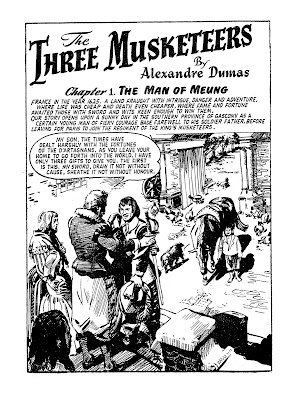Publication Dates: July 1942 – July 1955
Number of Issues Published: 126 (#22 – #147)
Color: Four color interiors; full color covers
Dimensions: Standard Golden Age U. S.
Paper Stock: Newsprint
Binding: Saddle-stitched
Publishing Format: Was ongoing series
Pages: 68 Indicia Frequency: bi-monthly
Tracking:
numbering continues from Silver Streak Comics (Lev Gleason, 1939 series) #21
Notes :
See also: Complete Book of True Crime Comics (Wm. H. Wise & Co., 1944 Series) [nn]; which reprints the contents of #22 and #24, rebound under a new cover.
Information thanks to the Grand Comics Database
Crime Does Not Pay is the title of an American comic book series published between 1942 and 1955 by Lev Gleason Publications. Edited and chiefly written by Charles Biro, the title launched the crime comics genre and was the first “true crime” comic book series. At the height of its popularity, Crime Does Not Pay would claim a readership of six million on its covers. The series’ sensationalized recountings of the deeds of gangsters such as Baby Face Nelson and Machine Gun Kelly were illustrated by artists Bob Wood, George Tuska, and others. Stories were often introduced and commented upon by “Mr. Crime”, a ghoulish figure in a top hat, and the precursor of “horror hosts” such as EC Comics’ Crypt Keeper. According to Gerard Jones, Crime Does Not Pay was “the first nonhumor comic to rival the superheroes in sales, the first to open the comic book market to large numbers of late adolescent and young males.”
When Lev Gleason hired Bob Wood and Charles Biro to edit Daredevil and Silver Streak comics in 1941, he rewarded the two cartoonists with a profit-sharing program and creator credits on the covers of the comics. In addition, Gleason urged the pair to create new titles for his company under the understanding that they would share in the profits. Biro and Wood discussed the matter and eventually came up with a concept that would become Crime Does Not Pay, a comic book series chronicling the lives of murderers and gangsters based in part on real world people. Biro is reputed to have been inspired by a meeting with a kidnapper and pimp one night in a bar, although publisher Arthur Bernhard has stated that the entire concept was created by Gleason. The title was based on a popular radio and MGM film series.
First issues
Heralded by ads in other Gleason tiles, Crime Does Not Pay took over the numbering of Silver Streak comics with issue 22 cover dated July 1942. The first issue featured articles and comic stories about real criminals and was written by Biro and Wood. Biro designed and drew the first cover and wrote stories about mobsters Louis Buchalter and “Diamond Joe” Esposito, and gunfighter Wild Bill Hickok and Belle Starr written by Dick Wood
Initial issues sold approximately 200,000 copies each, a healthy number for the time, but by the end of World War II the title was selling 800,000 per issue. When sales reached one million in 1948, the editors added the claim “More Than 5,000,000 Readers Monthly” to the cover, a reference to the pass-along effect of comics circulation.
Content
Mostly written by Charles Biro, the stories in Crime Does Not Pay became known for their lurid detail, confessional tone, and exceptional, violent artwork. The stories often dealt frankly with adult relationships, drug use and sex, in addition to the depictions of physical violence, torture, and murder that were standard for every issue.
Recurring features included “Officer Common Sense”, beginning with issue 41, “Chip Gardner”, issue 22, and “Who Dunnit”, puzzle mystery series with art by Fred Guardineer, beginning with issue 39.
Mr. Crime
Issue 24 introduced the Biro-designed figure of Mr. Crime, the cartoon mascot of the series, who narrated and commented on the action depicted in the comics, addressing his readers in a joking, conspiratorial tone. Mr. Crime dressed in a white top hat (labeled “Crime”) and white sheet. His bizarre visage resembled a gremlin, with pointed ears, nose and teeth. In many ways he was similar to the character of Mr. Coffee Nerves from a series of print ads for Postum designed by cartoonists Milt Caniff and Noel Sickles. The character of Mr. Crime pre-dated the Horror Hosts of EC Comics and other publishers, and his ghostly presence is very similar to that effected by Rod Serling on The Twilight Zone television series and of Raymond Edward Johnson on the Inner Sanctum radio program.
Mr. Crime’s attitude toward the tales he narrated was ambivalent at best. In some panels he seemed to approve of and even encourage the crimes of a story’s miscreants (acting as a sort of anti-conscience, invisible to the characters), while in others he was openly contemptuous of criminals, rarely failing, as the story’s protagonists met their end in the denouement, to remind readers that, as the title indicated, “Crime Does Not Pay”.


.jpg)
.jpg)




.jpg)
.jpg)

.jpg)
.jpg)
.jpg)
.jpg)

%20(clickwheel)%20-%20Desconocido.jpg)
%20-%20Desconocido.jpg)
%20(John%20Williams-DCP)%20-%20Desconocido.jpg)
%20(John%20Williams-DCP)%20-%20Desconocido.jpg)
%20(John%20Williams-DCP)%20-%20Desconocido.jpg)
%20(clickwheel)%20-%20Desconocido.jpg)
%20(John%20Williams-DCP)%20-%20Desconocido.jpg)
%20(clickwheel)%20-%20Desconocido.jpg)
%20(clickwheel)%20-%20Desconocido.jpg)
%20(John%20Williams-DCP)%20-%20Desconocido.jpg)
%20(John%20Williams-DCP)%20-%20Desconocido.jpg)
%20(John%20Williams-DCP)%20-%20Desconocido.jpg)
%20(John%20Williams-DCP)%20-%20Desconocido.jpg)













%2036pg%20charlton%20-%20Desconocido.jpg)





